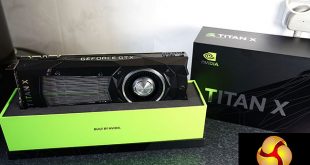
Nvidia's GTX 1080 has been dominating the high end this year with AMD placing focus in the low end to mid range market with their RX 480, RX 470 and RX 460. Nvidia CEO Jen-Hsun Huang has described the latest Titan X as ‘The Ultimate' and at an eye watering price of £1099.99 we expect performance to be nothing less than class leading.
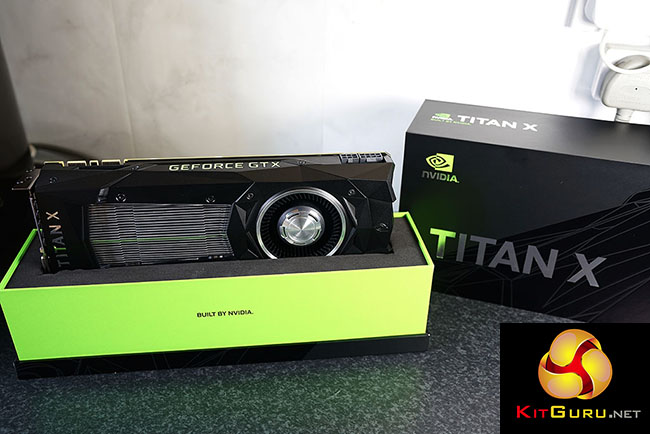
The Titan X (Pascal) arrived with us some time ago, but due to a backlog in other reviews I was only able to approach this review recently. I also wanted to add in Total War: Warhammer and Doom 2016 game tests, so its taken a little longer than expected.
The Titan X sample arrives in a slim line black and green box, direct from Nvidia – it is compact packaging without any frills. The card is reference cooled making it a great solution to use in SLi as all the hot air is pumped out the rear of the chassis. Yes, a big fat bank balance is required.
| GPU | Nvidia Titan X (Pascal) | Nvidia GTX 960 | Nvidia GTX 970 | Nvidia GTX 1060 | Nvidia GTX 1070 | Nvidia GTX 1080 |
| Streaming Multiprocessors / Compute Units |
30 | 8 | 13 | 10 | 15 | 20 |
| GPU Cores | 3584 | 1024 | 1664 | 1280 | 1920 | 2560 |
| Base Clock | 1418 MHz | 1126 MHz | 1050 MHz | 1506 MHz | 1506 MHz | 1607 MHz |
| GPU Boost Clock | 1531 MHz | 1178 MHz | 1178 MHz | 1708 MHz | 1683 MHz | 1733 MHz |
| Total Video memory | 12288 MB | 2048 or 4096 MB | 4096 MB | 6144 MB | 8192 MB | 8192 MB |
| Texture Units | 298 | 64 | 104 | 80 | 120 | 160 |
| Texture fill-rate | 136.1 GT/s | 72 GT/s | 109.2 GT/s | 120.5 GT/s | 180.7 GT/s | 257.1 GT/s |
| Memory Clock | 10Gbps | 7Gbps | 7Gbps | 8 Gbps | 8Gbps | 10Gbps |
| Memory Bandwidth | 480 GB/s | 112 GB/s | 224 GB/s | 192 GB/s | 256 GB/s | 320 GB/s |
| Bus Width | 384-bit | 128-bit | 256-bit | 192-bit | 256-bit | 256-bit |
| ROPs | 96 | 32 | 56 | 48 | 64 | 64 |
| Manufacturing Process | 16nm | 28nm | 28nm | 16nm | 16nm | 16nm |
| TDP | 250 W | 120 W | 145 W | 120 W | 150 W | 180 W |
On paper the Titan X (Pascal) is a beast. It has 3,840 CUDA cores spread across 30 streaming multiprocessors and six processing clusters from which 3,584 are enabled. There are 96 ROPs, 224 Texture units and 12GB of GDDR5X (Micron) memory connected via a fat 384 bit memory interface.
When we look at the GTX 1080 we can see the Titan X has a 50 percent increase in peak bandwidth due to the 384 bit memory controller. It also has a 40 percent increase in texture units/shaders per-SM. Obviously we have 12GB of memory, twice the amount incorporated on the GTX 1080.
The Titan X does give away some clock speed to the GTX 1080, meaning the cores are running slower on the more expensive model. That said, there is much more width via the Titan X ensuring performance will be improved significantly. This should ensure killer performance at 4K resolutions.
Nvidia box artwork is effective, yet simple.
The card is protected inside thick foam and an anti static covering.
Inside the box is a little nvidia branded folder containing a ‘quick start' and ‘support guide' on the card.
The Titan X looks very similar to other Titan branded cards from previous generations. Obviously it is black and not silver like some of the earlier models, but Nvidia haven't broke with the mould and added another fan for instance.
Nvidia haven't suddenly adopted RGB lighting either – but the ‘Geforce GTX' wording seen above, lights up in green when powered on.
The card measures 10.5 inches and it fits perfectly into a dual slot form factor. Discussing Nvidia reference coolers can often end up in a heated debate. I have used Nvidia reference coolers with SLI configurations for years now, and generally tie them in with MSI Afterburner, raising the temperature profile to slightly increase performance further.
Two way SLI is supported and we recommend you pick up one of the new Nvidia SLI adapters to ensure you are running at full performance. More information on this over HERE.
The Titan X takes power from a single 6 pin and an 8 pin power connector. Nvidia claim the power demand has increased from 180 watts on the GTX 1080 Founders Edition to 250 watts on the Titan X.
A single dual link DVI port sits above three DisplayPort and a single HDMI connector. The Titan X is DisplayPort 1.2 certified, DisplayPort 1.3 and 1.4 ready enabling support for 4K display at 120hz, 5K displays at 60hz and 8k Displays at 60hz (with two cables).
The GP102 die is large. 12GB of GDDR5x memory populates the positions around the GPU core. There will only ever be one version of the Titan X – Nvidia partners are not allowed to release their own custom versions of this card.
We are using the AMD Crimson Edition Display Driver, Version 16.17.3 and Nvidia ForceWare 368.81 driver. The Titan X has been tested with the 369.05 driver.
We are using a custom Titan Bayonet system supplied by Overclockers UK as the basis of our test system today. Read more on this system over HERE.
Case: Phanteks Enthoo Evolv ATX Mid Tower
Processor: Intel 6700K @ 4.4ghz
Memory: Corsair Vengeance LPX 16GB (2x8GB) @ 3000mhz
Motherboard: ASUS Z170-E DDR4 ATX Motherboard
Power Supply: Super Flower Leadex 850W Gold Certified
Software: Microsoft Windows 10 64 Bit
SSD: Samsung 250GB 850 EVO
HDD: Seagate 1TB 7,200 rpm 64MB Cache.

If you want to purchase this system yourself head to THIS page on OCUK.
Graphics cards:
Nvidia Titan X (Pascal) – (1,418 mhz core/ 1,531 mhz boost / 1,251 mhz (10Gbps effective) memory)
Comparison Cards on test:
Asus RX 480 Strix Gaming OC AURA RGB – (1,330mhz core / 2,000 (8Gbps effective) memory)
MSI GTX 1080 Gaming X 8G RGB SLI– (1,683mhz core / 1,823 mhz boost / 5000 mhz memory)
Palit GTX 1080 GameRock Premium Edition – (1,747mhz core / 1,886mhz boost / 5256 mhz memory)
MSI GTX 1080 Gaming X 8G RGB – OC Mode (1,709mhz core / 1,849mhz boost / 5,056 mhz memory)
Gigabyte GTX 1080 G1 Gaming RGB (1721 mhz core / 1860 mhz boost / 5,005 mhz memory)
Nvidia GTX 1080 Founders Edition (1607mhz core/ 1733mhz boost / 5,005 mhz memory)
Nvidia GTX 1070 Founders Edition (1506mhz core/ 1683mhz boost / 4,006 mhz memory)
Sapphire RX 480 Nitro + OC 8GB – (1,342mhz core / 2,000 mhz (8Gbps effective) memory)
Sapphire RX 480 Nitro + OC 4GB – (1,306mhz core / 1,750 mhz (8Gbps effective) memory)
Sapphire R9 390 Nitro 8GB (Rev 2 w/ backplate). (1040mhz core / 1,500 mhz memory)
Sapphire R9 295X2 (1,018 mhz core / 1,250mhz memory)
AMD R9 Fury X (1,050 mhz core / 500 mhz memory)
AMD R9 Nano (1,000mhz core / 500 mhz memory)
Gigabyte GTX980 Ti XTREME Gaming (1,216 mhz core / 1800mhz memory)
Nvidia GTX Titan Z (706 mhz core / 1,753 mhz memory)
Nvidia GTX Titan X (1,000 mhz core / 1,753 mhz memory)
Asus GTX980 Strix (1,178 mhz core / 1,753 mhz memory)
Nvidia GTX980 Ti (1,000 mhz core / 1,753 mhz memory)
Sapphire R9 390X Tri-X 8GB (1,055 mhz core / 1,500 mhz memory)
Sapphire R9 390 Nitro 8GB (1,010 mhz core / 1,500 mhz memory)
Software:
Windows 10 64 bit
Unigine Heaven Benchmark
3DMark 11
3DMark
Fraps Professional
Steam Client
FurMark
Games:
Ashes Of the Singularity
Dirt Rally
Hitman 2016
Middle Earth: Shadow Of Mordor
Rise Of the Tomb Raider
Grand Theft Auto 5
Metro Last Light Redux
Games added:
Doom 2016 (Open GL)
Total War: Warhammer
(we have been unable to test all graphics cards with Doom 2016 and Total War: Warhammer, so a selected list of hardware appears on these pages).
Additional equipment:
Leica S-E (006) medium format camera with 100mm Leica F2 lens.
We perform under real world conditions, meaning KitGuru tests games across five closely matched runs and then average out the results to get an accurate median figure. If we use scripted benchmarks, they are mentioned on the relevant page.
Game descriptions edited with courtesy from Wikipedia.
3DMark 11 is designed for testing DirectX 11 hardware running on Windows 7 and Windows Vista. The benchmark includes six all new benchmark tests that make extensive use of all the new features in DirectX 11 including tessellation, compute shaders and multi-threading. After running the tests 3DMark gives your system a score with larger numbers indicating better performance. Trusted by gamers worldwide to give accurate and unbiased results, 3DMark 11 is the best way to test DirectX 11 under game-like loads
The Nvidia Titan X (Pascal) takes top position in the single GPU chart, around 2,000 points ahead of the Palit GTX 1080 GameRock Premium Edition card.
3DMark is an essential tool used by millions of gamers, hundreds of hardware review sites and many of the world’s leading manufacturers to measure PC gaming performance.
Futuremark say “Use it to test your PC’s limits and measure the impact of overclocking and tweaking your system. Search our massive results database and see how your PC compares or just admire the graphics and wonder why all PC games don’t look this good.
To get more out of your PC, put 3DMark in your PC.”
Similar results to the older 3DMark 11, an early indication of the performance of the Pascal driven Titan X.
Unigine provides an interesting way to test hardware. It can be easily adapted to various projects due to its elaborated software design and flexible toolset. A lot of their customers claim that they have never seen such extremely-effective code, which is so easy to understand.
Heaven Benchmark is a DirectX 11 GPU benchmark based on advanced Unigine engine from Unigine Corp. It reveals the enchanting magic of floating islands with a tiny village hidden in the cloudy skies. Interactive mode provides emerging experience of exploring the intricate world of steampunk. Efficient and well-architected framework makes Unigine highly scalable:
- Multiple API (DirectX 9 / DirectX 10 / DirectX 11 / OpenGL) render
- Cross-platform: MS Windows (XP, Vista, Windows 7) / Linux
- Full support of 32bit and 64bit systems
- Multicore CPU support
- Little / big endian support (ready for game consoles)
- Powerful C++ API
- Comprehensive performance profiling system
- Flexible XML-based data structures
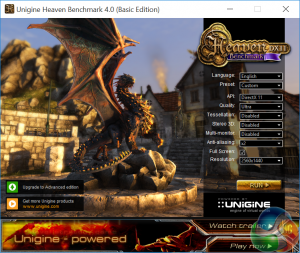
We test at 2560×1440 with quality setting at ULTRA, Tessellation at NORMAL, and Anti-Aliasing at x2.
The Titan X is showing staggering tessellation performance. It is averaging more than 30 frames per second more than the overclocked Palit GTX 1080 GameRock Premium Edition – the fastest GTX1080 we have tested so far.
Ashes of the Singularity is a real-time strategy game set in the future where descendants of humans (called Post- Humans) and a powerful artificial intelligence (called the Substrate) fight a war for control of a resource known as Turinium.
Players will engage in massive-scale land/air battles by commanding entire armies of their own design. Each game takes place on one area of a planet, with each player starting with a home base (known as a Nexus) and a single construction unit.
We test the final retail game at 1080p/1440p and 4K resolution and with EXTREME image quality settings, shown above. Enable multiple GPU's was ticked on.
The new Titan X dominates the Ashes Of The Singularity game tests, at ALL resolutions. Fantastic results.
Middle-earth: Shadow of Mordor is a third-person open world video game, where the player controls a ranger by the name of Talion who seeks revenge on the forces of Sauron after his family, including his wife, are killed. Players can travel across locations in the game through parkour, riding monsters, or accessing Forge Towers, which serve as fast travel points.
We test at 1440p and Ultra HD 4k with the image quality settings at Ultra.
Excellent results at both resolutions. The Titan X is actually the only single GPU solution that can hold a 60 frames per second minimum frame rate at 4k resolutions. There was only one instance for a split second when the frame rate dropped to 59.
Dirt Rally is developed by British video game developer Codemasters using the in house Ego engine. Development began with a small team of individuals following the release of their 2012 video game Dirt: Showdown. Codemasters have emphasised a desire to create a simulation with Dirt Rally. They started by prototyping a handling model and creating tracks based on map data. The game employs a different physics model from previous titles, rebuilt from the ground up.
We test at 1080p/1440p and 4K with 8x MSAA and the ultra image quality setting enabled.
The Titan X is a monster at all resolutions, but again we can see in regards to single GPU solutions, it is able to deliver a constant 60 frames per second at 4k resolutions.
Rise of the Tomb Raider is a third-person action-adventure game that features similar gameplay found in 2013's Tomb Raider. Players control Lara Croft through various environments, battling enemies, and completing puzzle platforming sections, while using improvised weapons and gadgets in order to progress through the story. It uses a Direct X 12 capable engine.
We enable Direct X 12, Vsync is off and graphics are set to the ‘very high' profile, shown above. We test the Nvidia Titan Z with the SLi optimisation both disabled, then enabled. This is clearly marked in the graph. See more HERE.
Performance from the new Titan X is at the top of our chart, beating out the fastest GTX 1080 we have tested (The Palit GTX 1080 Gamerock Premium Edition).
Grand Theft Auto V is an action-adventure game played from either a first-person or third-person view. Players complete missions—linear scenarios with set objectives—to progress through the story. Outside of missions, players may freely roam the open world. Composed of the San Andreas open countryside area and the fictional city of Los Santos, the world is much larger in area than earlier entries in the series. It may be fully explored after the game's beginning without restriction, although story progress unlocks more gameplay content.
We maximise all the image quality settings, but leave anti aliasing turned off, as it dramatically impacts performance.
Excellent performance at all resolutions, holding top position above the fastest GTX 1080 solutions available today.
Just like the original game Metro 2033, Metro: Last Light is played from the perspective of Artyom, the player-character. The story takes place in post-apocalyptic Moscow, mostly inside the metro system, but occasionally missions bring the player above ground. Metro: Last Light takes place one year after the events of Metro 2033, following the canonical ending in which Artyom chose to proceed with the missile strike against the Dark Ones (this happens regardless of your actions in the first game). Redux adds all the DLC and graphical improvements.
1080p and 1440p settings Quality-Very High, SSAA-on, Texture Filtering-16x, Motion Blur-Normal, Tessellation-Normal, Advanced Physx-off.
Ultra HD 4k settings Quality-High, SSAA-off, Texture Filtering-16x, Motion Blur-Normal, Tessellation-Normal, Advanced Physx-off.
The Titan X shows a clear performance lead with this engine, which is heavy on tessellation. We can see at 4K that the Titan X is the only single card on test that can hold a constant 60+ frames per second.
Hitman (2016) is a third-person stealth video game in which players take control of Agent 47, a genetically enhanced, superhuman assassin, travelling to international locations and eliminating contracted targets. As in other games in the Hitman series, players are given a large amount of room for creativity in approaching their assassinations. The game is being released in stages, which hasn't proved too popular with a large audience.
We test with many of the settings maximised, SSAO is disabled however as I found it causes some crashing. I have to say that Hitman is a little unstable at times under the best of situations, but we managed to get it running well enough to benchmark. The built in benchmark is very flaky indeed however, so real world runs had to be used.
Performance is excellent but it is at Ultra HD 4K that we can see the benefits the wider architecture brings to the table. We are holding a 60 frames per second minimum at all times. The GTX 1080 cards lose a minimum of 7 frames per second under the same conditions.
Doom (stylized as DOOM) is a science fiction – horror first-person shooter video game developed by id Software and published by Bethesda Softworks. It is an incredibly fun ‘old fashioned' first person shooter game that will bring feelings of nostalgia. Its a great game too incidentally.
We test at TSSAA 8TX, with Ultra settings.
We haven't had time to test Doom with all the graphics cards in our offices, so we selected a handful of cards from both Nvidia and AMD partners at 1080p, 1440p and Ultra HD 4k.
No need for a Titan X to get excellent game performance at 1080p and 1440p. At Ultra HD 4K resolution however, the Titan X is the only card on test to maintain a 60+ frame rate at all times. This can be critical for the maximum immersive experience with a first person shooter game.
Total War: Warhammer is a turn-based strategy real-time tactics video game developed by Creative Assembly and published by Sega. The game features the gameplay of the Total War series with factions of Games Workshop's Warhammer series.
We test in Direct X 12, with MLAA and Ultra quality settings.
We haven't had time to test Total War: Warhammer with all the graphics cards in our offices, so we selected a handful of cards from both Nvidia and AMD partners at 1080p, 1440p and Ultra HD 4k.
A GTX 1080 is great at 1080p and 1440p resolutions, however the added width of the Titan X (Pascal) architecture helps drive some fantastic frame rates at Ultra HD 4k. Again this is the only card on test that can maintain a consistent 60+ frames per second at the highest resolutions.
We have built a system inside a Lian Li chassis with no case fans and have used a fanless cooler on our CPU. The motherboard is also passively cooled. This gives us a build with almost completely passive cooling and it means we can measure noise of just the graphics card inside the system when we run looped 3dMark tests.
We measure from a distance of around 1 meter from the closed chassis and 4 foot from the ground to mirror a real world situation. Ambient noise in the room measures close to the limits of our sound meter at 28dBa. Why do this? Well this means we can eliminate secondary noise pollution in the test room and concentrate on only the video card. It also brings us slightly closer to industry standards, such as DIN 45635.
KitGuru noise guide
10dBA – Normal Breathing/Rustling Leaves
20-25dBA – Whisper
30dBA – High Quality Computer fan
40dBA – A Bubbling Brook, or a Refrigerator
50dBA – Normal Conversation
60dBA – Laughter
70dBA – Vacuum Cleaner or Hairdryer
80dBA – City Traffic or a Garbage Disposal
90dBA – Motorcycle or Lawnmower
100dBA – MP3 player at maximum output
110dBA – Orchestra
120dBA – Front row rock concert/Jet Engine
130dBA – Threshold of Pain
140dBA – Military Jet takeoff/Gunshot (close range)
160dBA – Instant Perforation of eardrum
The Nvidia reference coolers struggle to compete with modified partner solutions when it comes to noise emissions. The Titan X is no different, although I have to say I didn't find noise levels under load to be that intrusive – the pitch is quite low. We do test in a more ‘real world' environment however – we don't believe testing a graphics card in an open bench with a microphone 5 centimetres away is anything close to realistic.
We didn't notice any coil whine, even under synthetically exacerbated conditions.
The tests were performed in a controlled air conditioned room with temperatures maintained at a constant 21c – a comfortable environment for the majority of people reading this. Idle temperatures were measured after sitting at the desktop for 30 minutes. Load measurements were acquired by playing Rise Of The Tomb Raider for 90 minutes and measuring the peak temperature. We also have included Furmark results, recording maximum temperatures throughout a 10 minute stress test. All fan settings were left on automatic.
The Nvidia cards operate on a principle of hitting a maximum temperature which is preset. We recorded 84c under load when playing games and running the synthetic benchmark FurMark.
We install the graphics card into the system and measure temperatures on the back of the PCB with our Fluke Visual IR Thermometer/Infrared Thermal Camera. This is a real world running environment playing Rise Of The Tomb Raider for extended periods of time.
Under extended load we measured temperatures between 65c and 70c in various parts of the card. The backplate helps to remove any problems with hotspots in specific parts of the PCB.
We overclock today with MSI Afterburner, my first software tool of choice.
We increase the power limit to 120, and the temp limit to 90c and increase the fan speeds to help ensure we minimise any throttling. Obviously noise levels are increased, but gamers wanting the maximum performance are likely to deal with extra fan noise, or they will be wearing headphones or listening to the game audio via a speaker system.
Increasing the power target helps Nvidia reference cards push the core higher. 90c is not a long term issue for a PCB like this.
The overclock helps drive an extra 3,229 points in 3DMark. Most games will benefit from a modest increase in frame rate as well.
We measure power consumption from the whole system when idle and when gaming, excluding the monitor. We play Rise Of the Tomb Raider and measure demand.
Power consumption from the system showed around 350 watts.
The latest Pascal driven Titan X is a truly remarkable GPU and it is the first graphics card that we have tested that can deliver a consistent 60 frames per second in many of the leading engines at Ultra HD 4K resolutions with the eye candy cranked. Not even the mighty GTX 1080 could lay claim to this title.
At 4k it would be fair to say that the Titan X is unequalled and is clearly 20%+ faster than any custom, overclocked GTX1080 we have tested to date. You could argue that Nvidia can charge whatever they want for these products but until AMD are in a position to issue some kind of credible challenge in the high end, we can't see Nvidia wanting to drive prices down -as they simply have no competition.
2016 UK market pricing is as high as we have ever seen with Intel and Nvidia charging fortunes for their high end processors and graphics cards. It is amazing to think that the Titan X isn't even a full implementation of the GP102 die – perhaps that is coming before the end of the year.
For those of you with deeper pockets and a new shiny 4K screen, then the Titan X will surely be at the top of your ‘want list'. If you don't like relying on SLI profiles with two GTX 1080 cards, then the Titan X is incredibly capable. It is the first time we have seen a single GPU able to sustain consistent 60+ frame rates at 4k with the image quality settings at the limit.
The Nvidia reference cooler is never going to win any awards for cooling proficiency, but I have owned many SLI oriented systems using these coolers in the past and have never had any problems. I do like how they push all the hot air outside the back of the case whereas many custom third party coolers will be expelling all their heat internally … subsequently rising upwards towards the processor. If you can afford the £2,200 needed to SLI two of these Pascal Titan X cards, then I take my hat off to you. Most of us can only dream of such a system.
Of course there is a large audience waiting on the GTX 1080 Ti to arrive, although we have no indication of a time frame yet. We would imagine that when the GTX 1080 ti surfaces it will likely cost around the £800 mark. This would be £150-£200 more than many GTX 1080 already available, and around £300 less than the Titan X.
You can buy the Titan X (Pascal) direct from Nvidia for £1,099.99 inc vat HERE.
Discuss on our Facebook page, over HERE.
Pros:
- the first true 4K capable card.
- no coil whine.
- looks great, especially in SLi.
- core seems to have plenty of headroom available, especially if watercooling.
- two in SLi ? yes please.
Cons:
- the cooler struggles a little to cope under load.
- fans don't disable when idle or under low load.
- it is rather expensive.
- temp limit should be increased a little to improve performance.
Kitguru says: The Pascal Nvidia Titan X is a showcase of Nvidia engineering. If you can afford the £1,099.00 asking price it is the ultimate single GPU solution to partner up with a new 4K monitor. There is no competition for this card right now.
 KitGuru KitGuru.net – Tech News | Hardware News | Hardware Reviews | IOS | Mobile | Gaming | Graphics Cards
KitGuru KitGuru.net – Tech News | Hardware News | Hardware Reviews | IOS | Mobile | Gaming | Graphics Cards


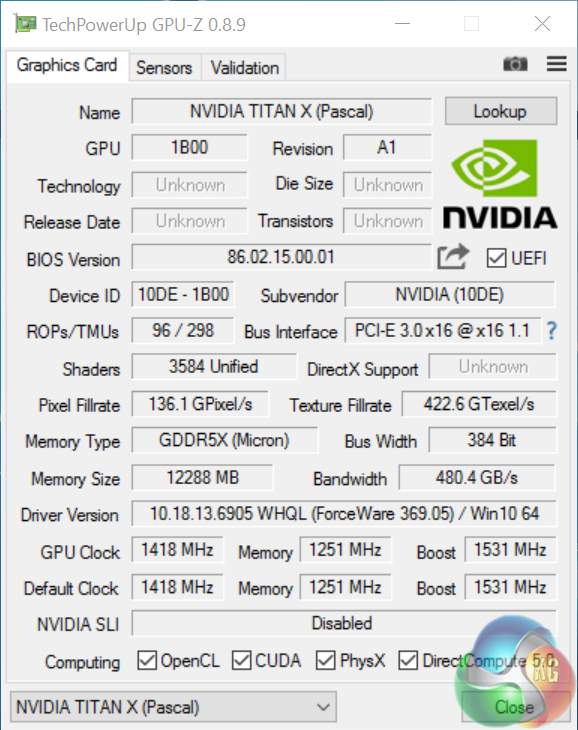
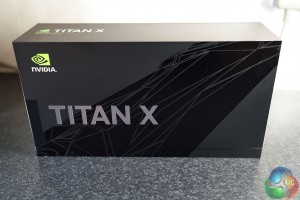
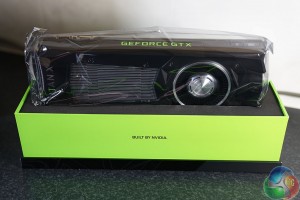
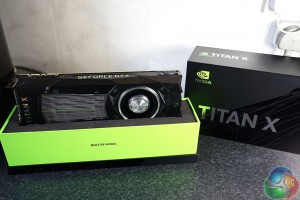
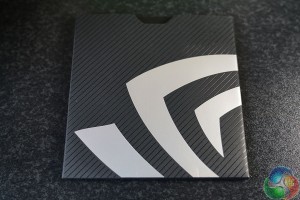
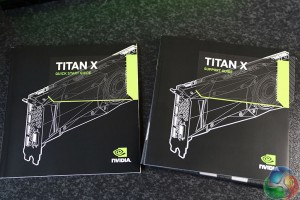
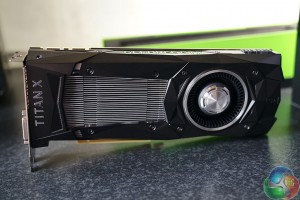
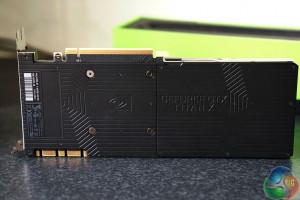
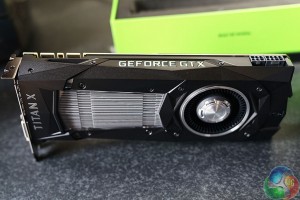
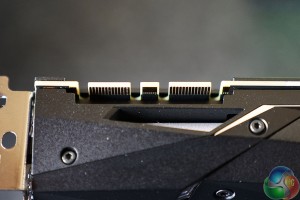
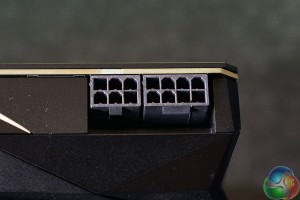
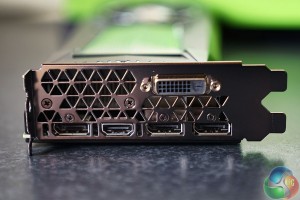
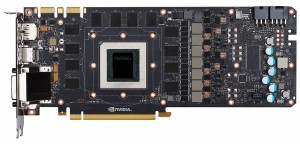
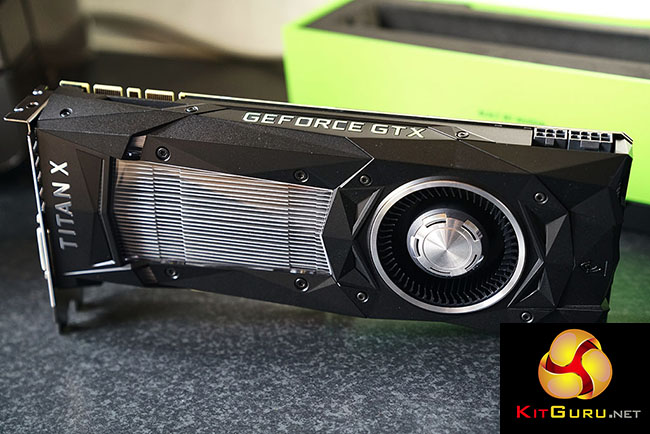
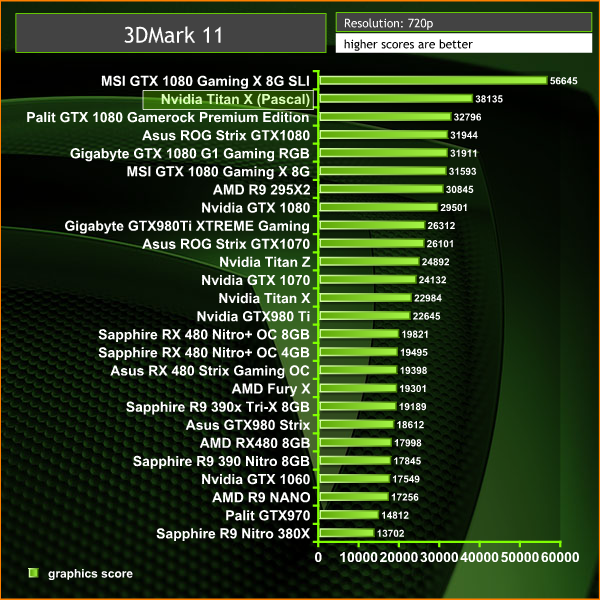
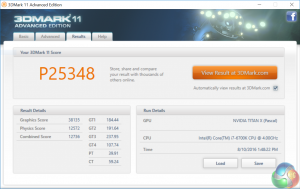
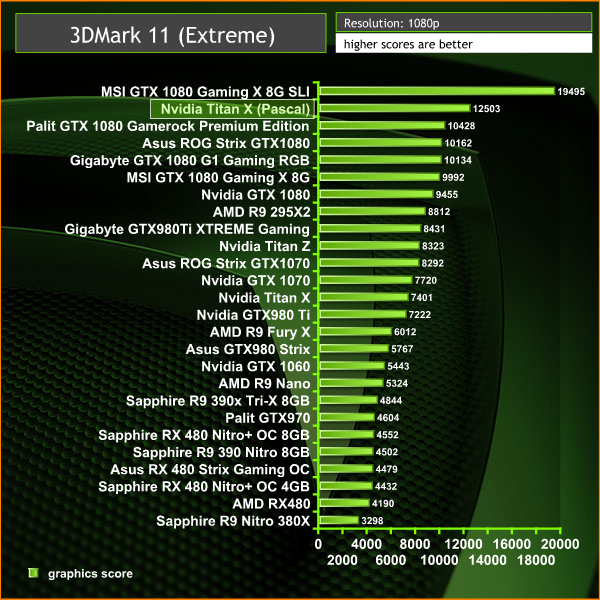
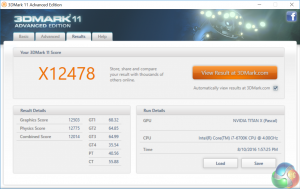
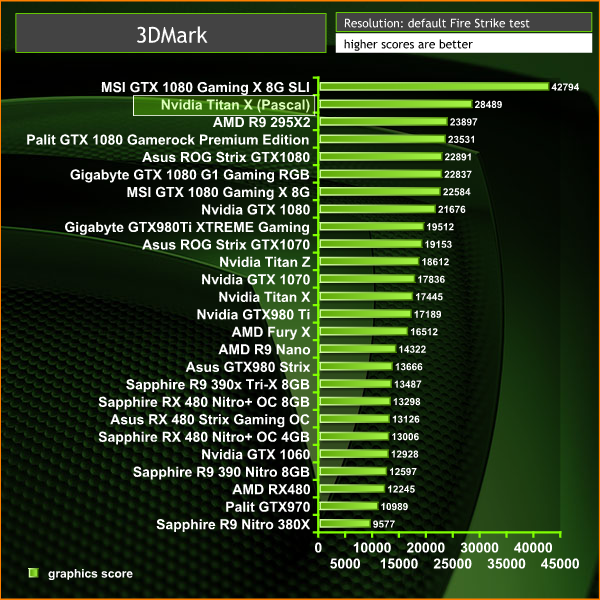
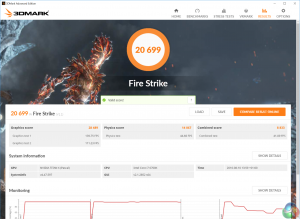
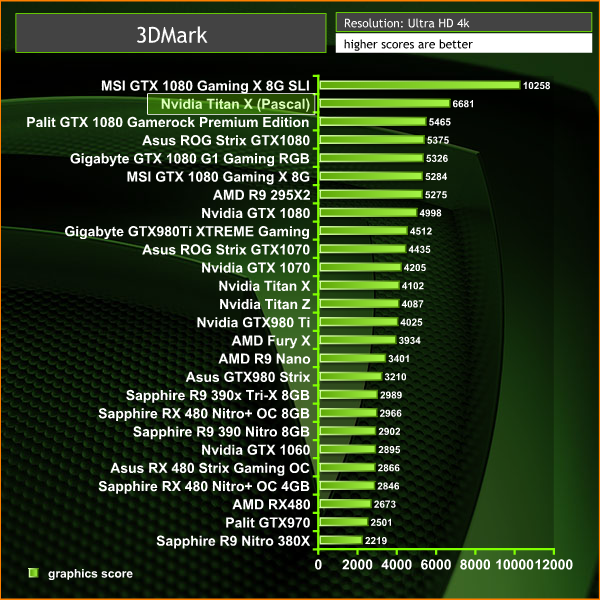
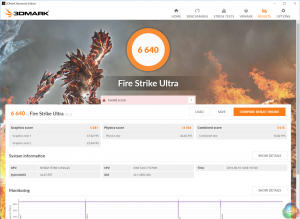
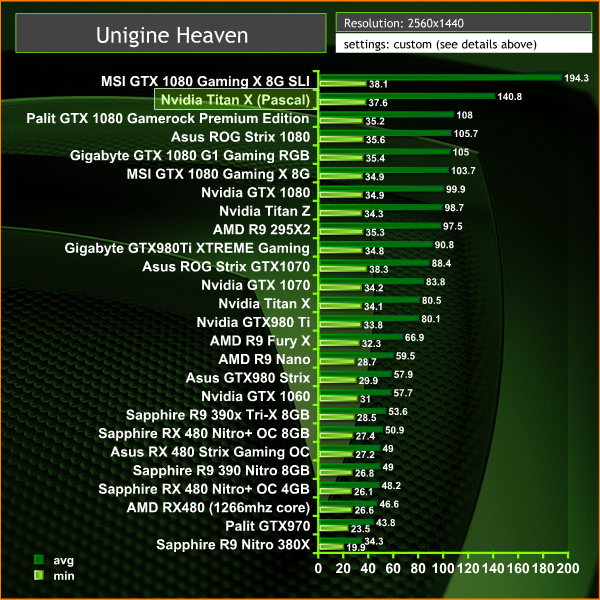
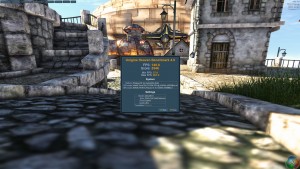
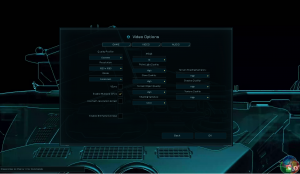
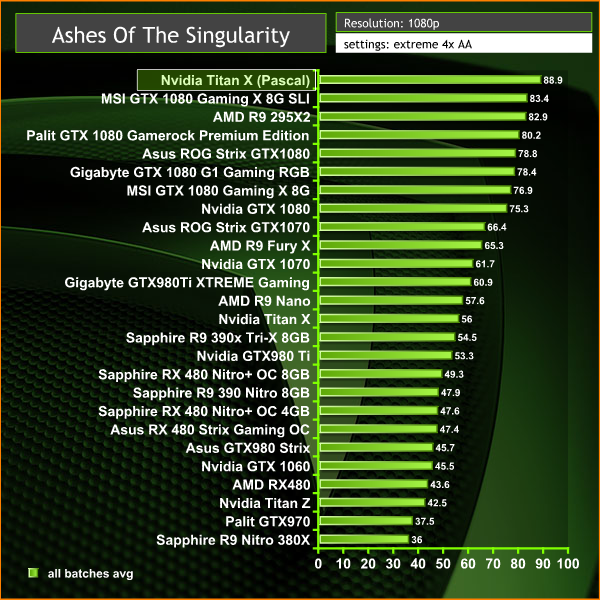
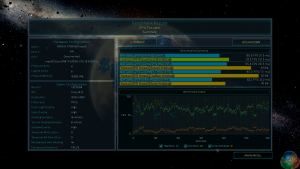
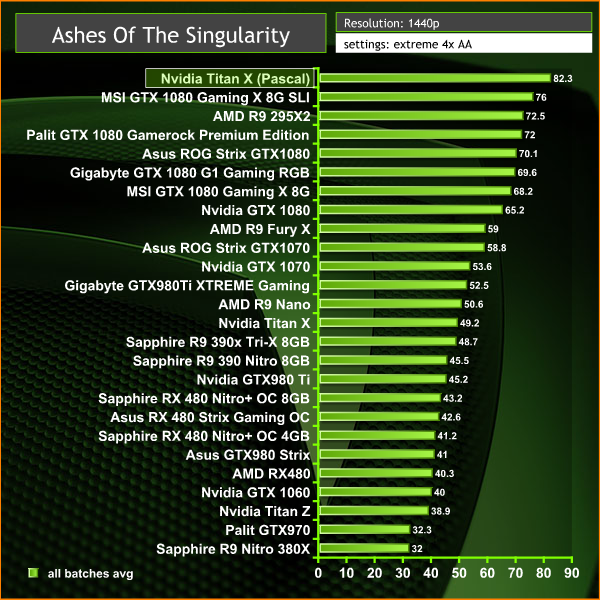
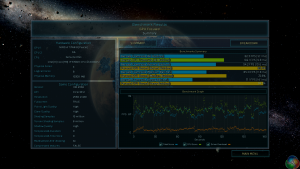
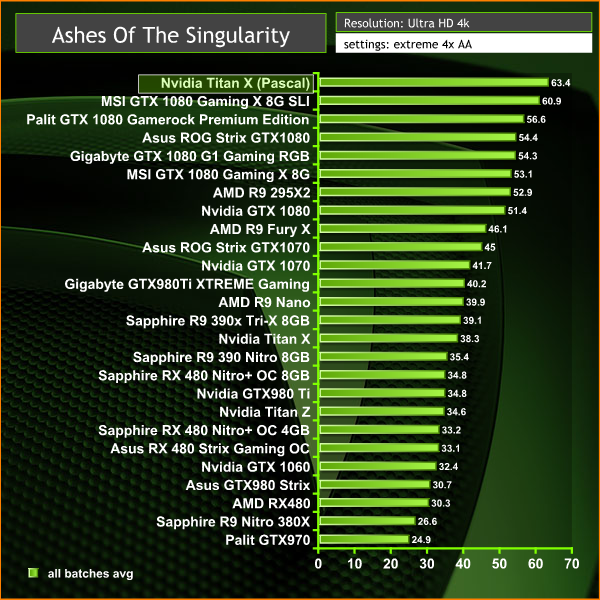
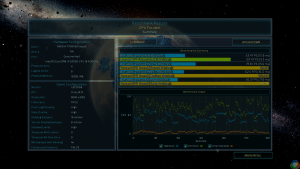


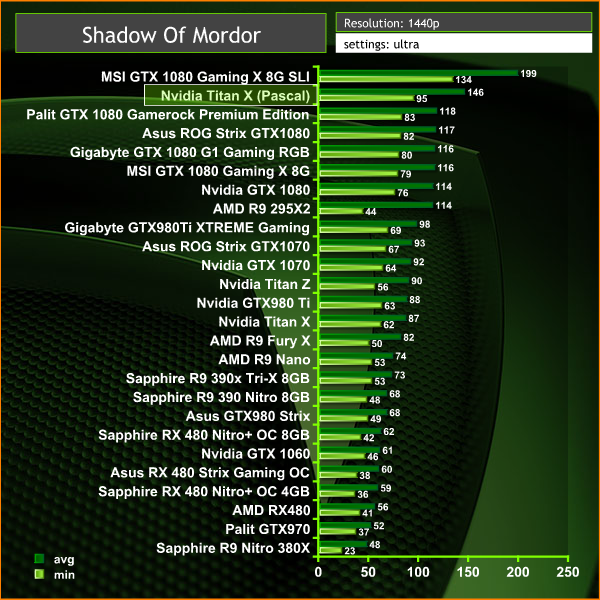

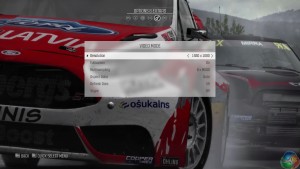

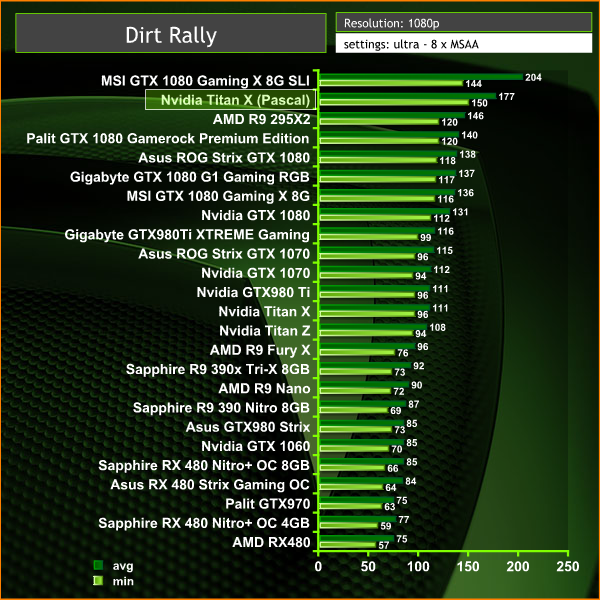
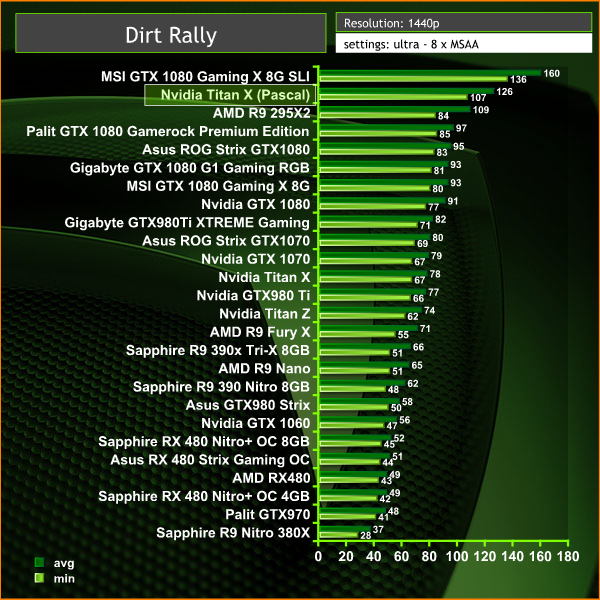
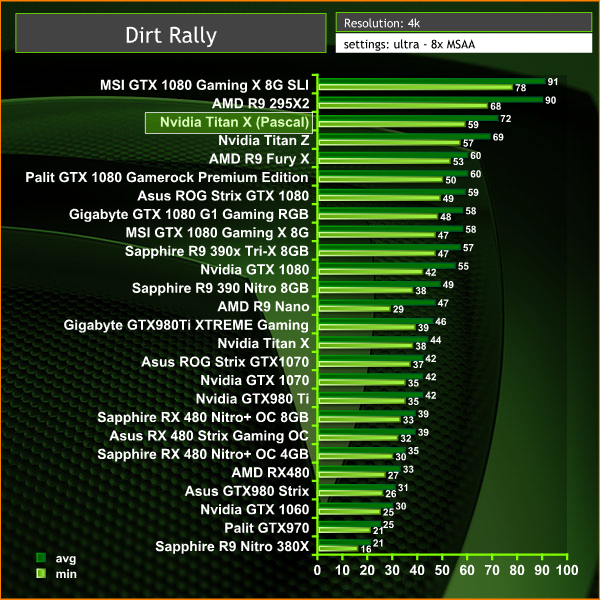
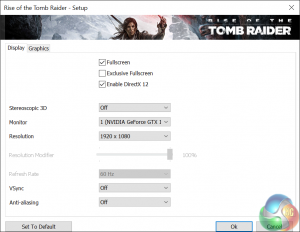
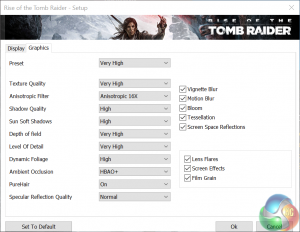
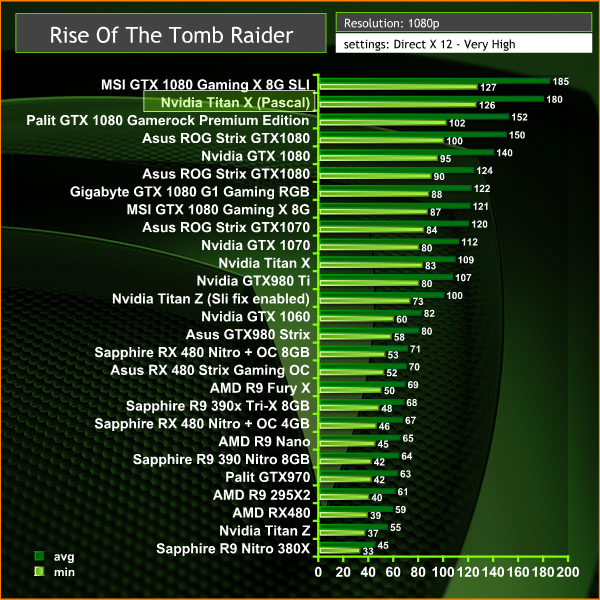

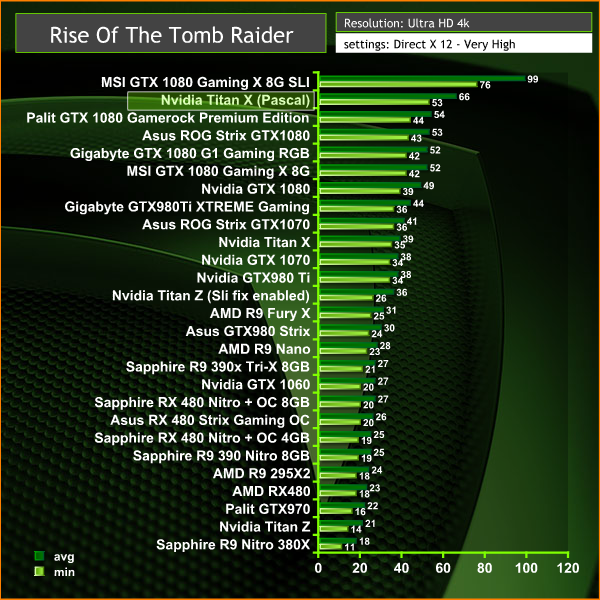




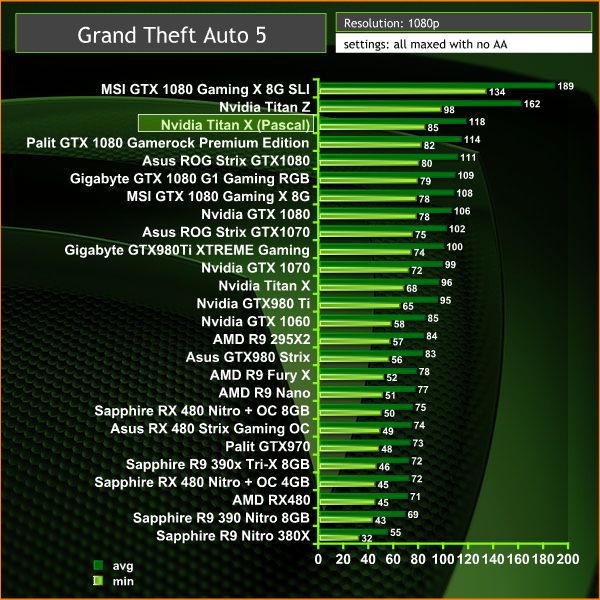
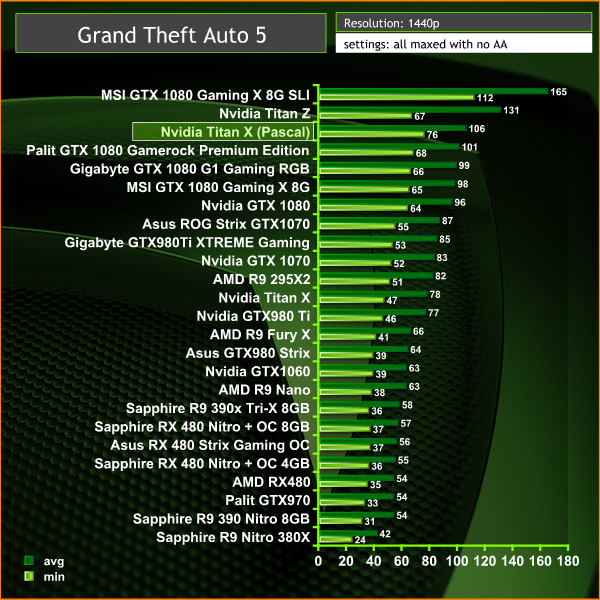
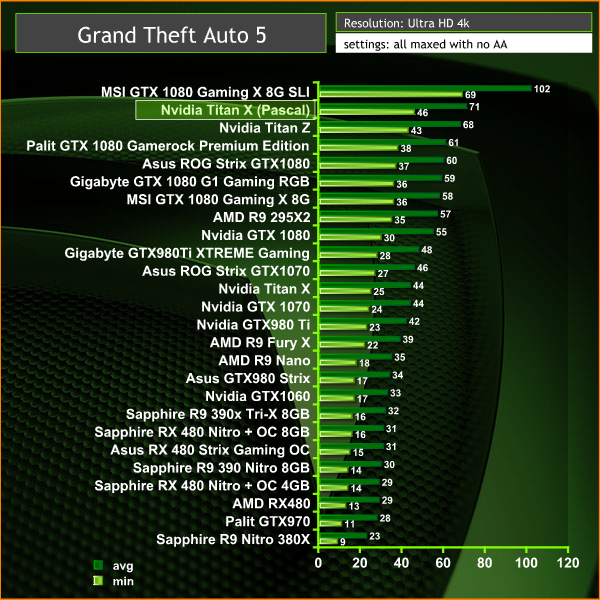

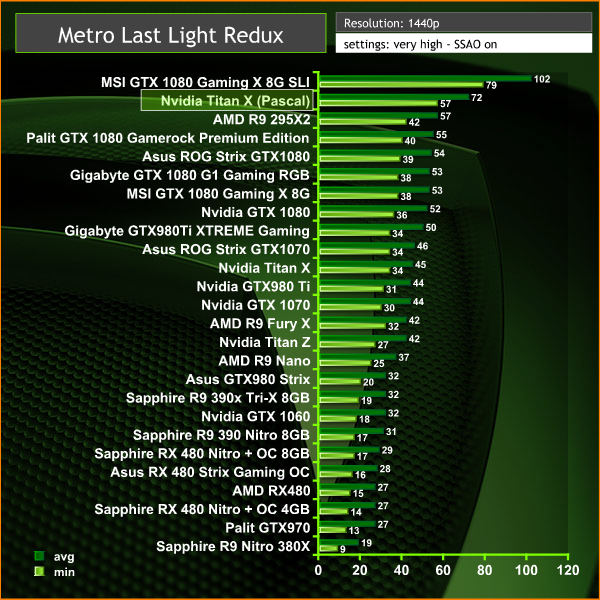
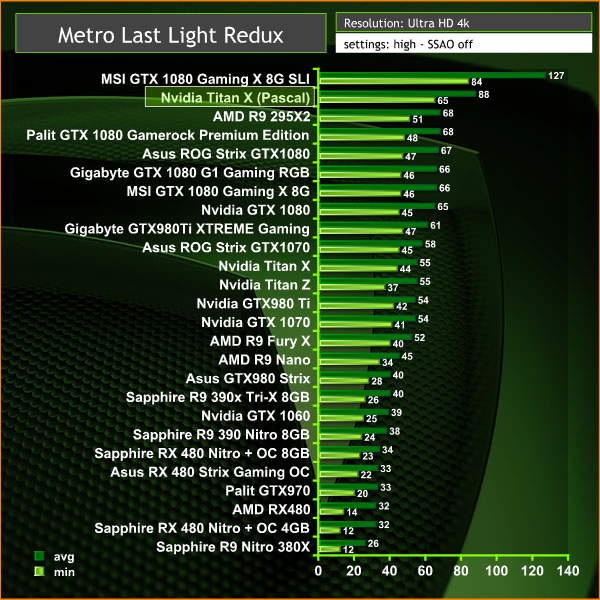
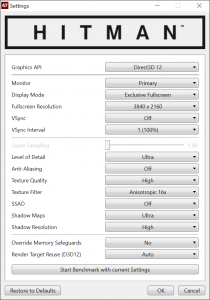
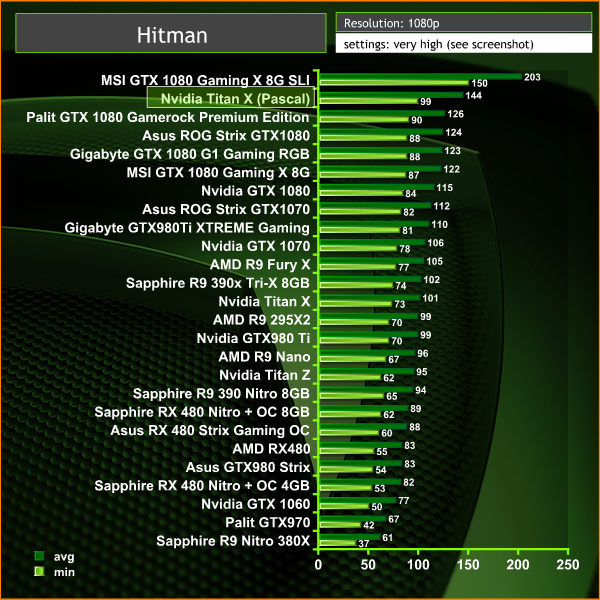
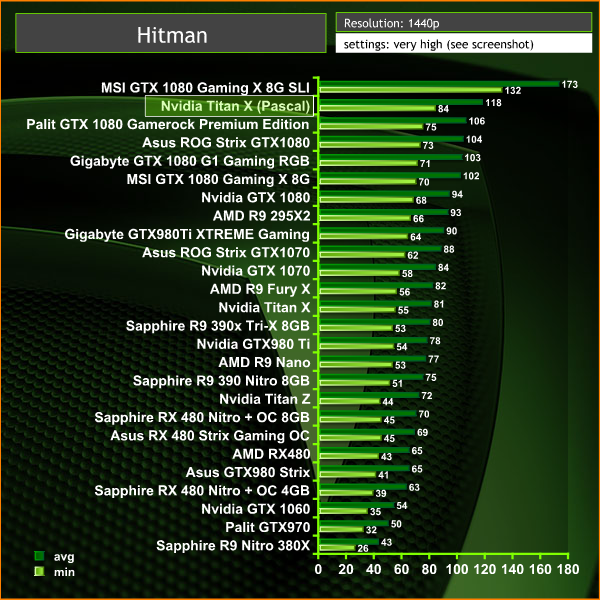
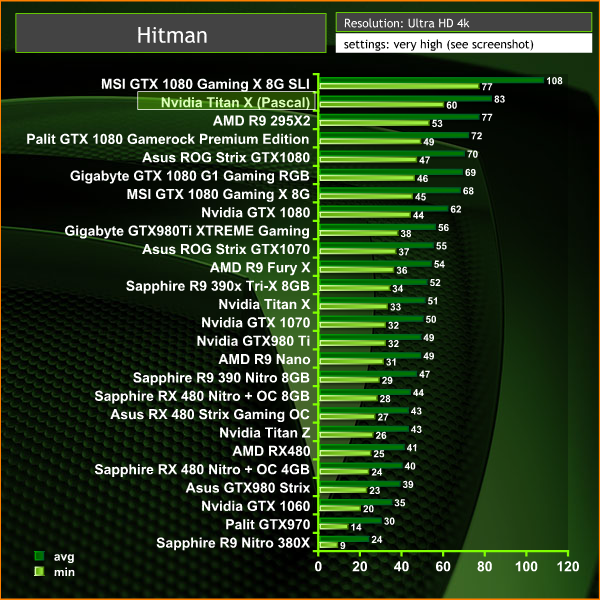
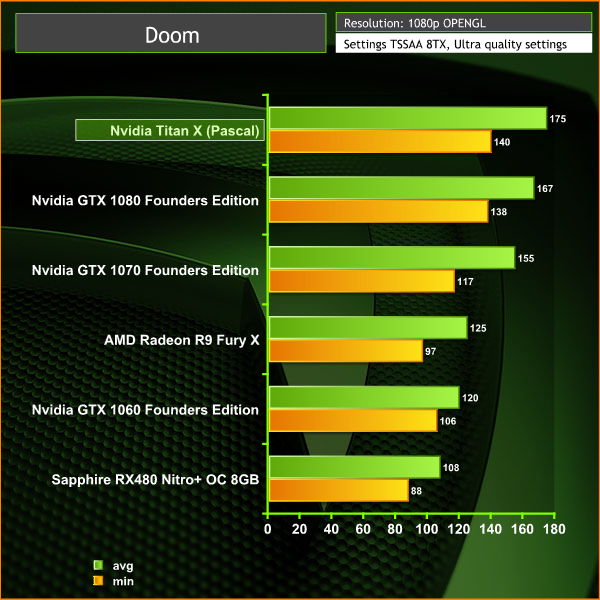
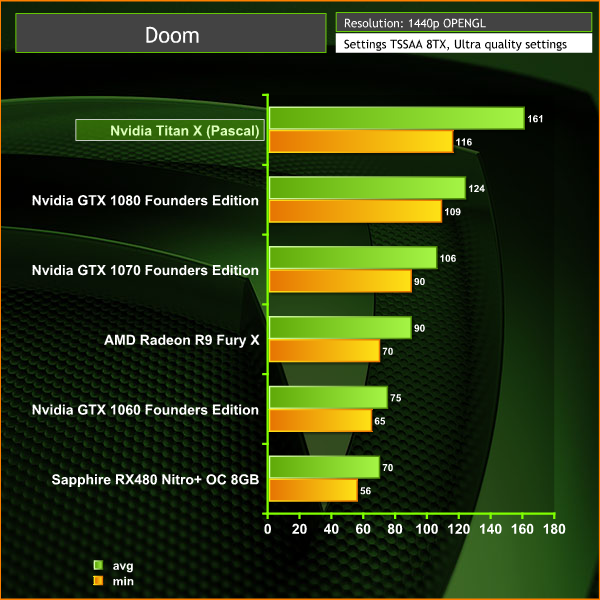
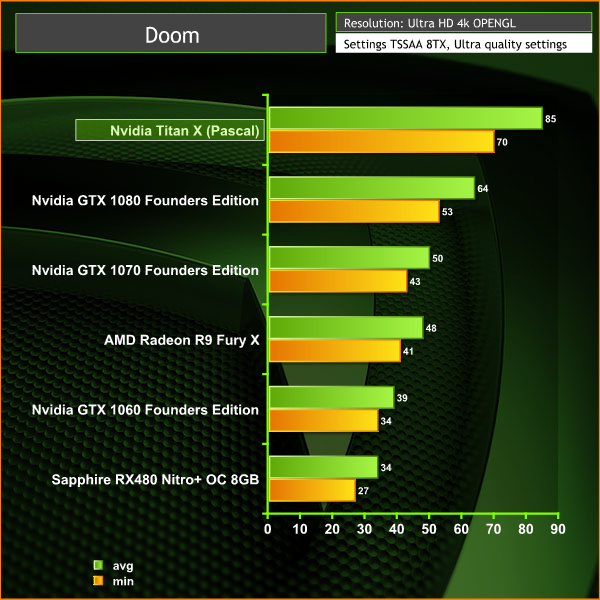
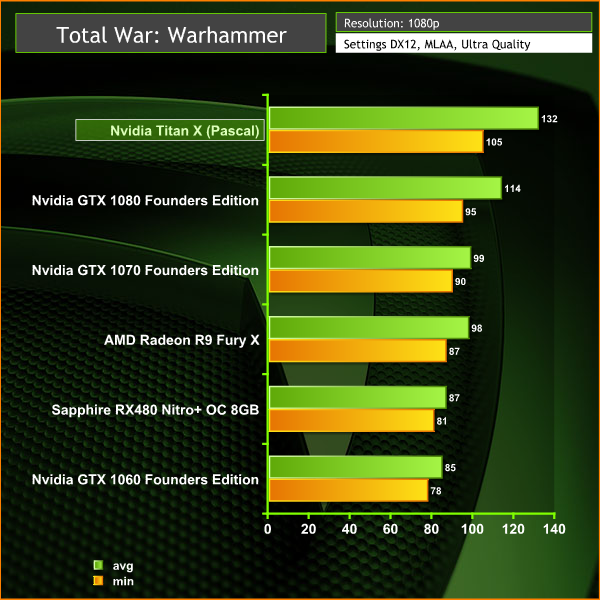
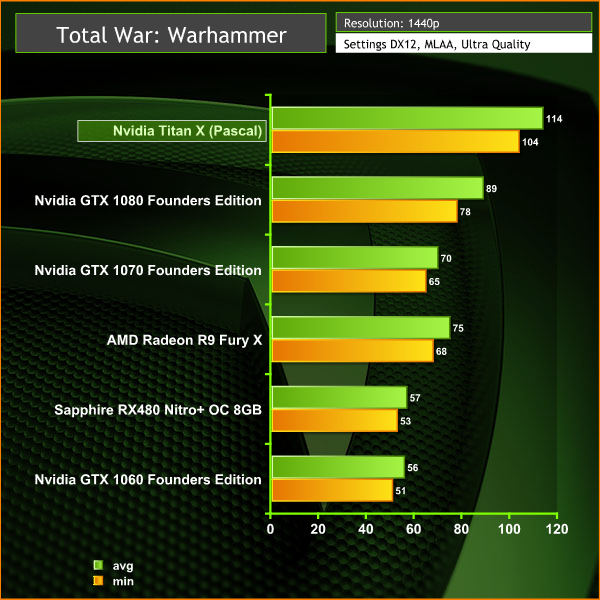
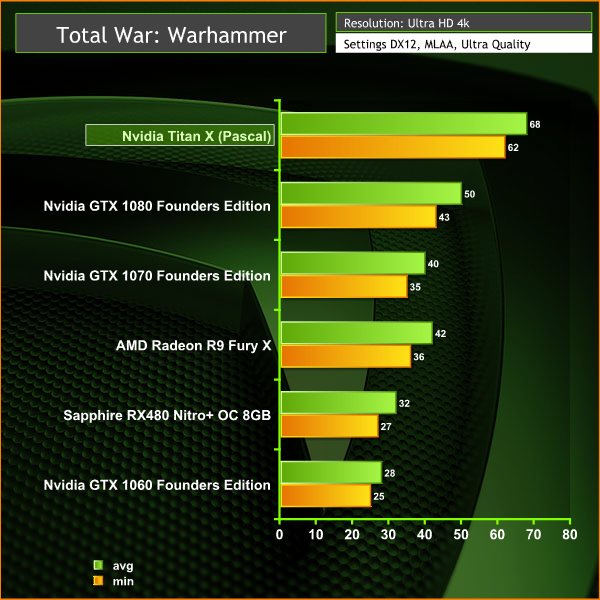
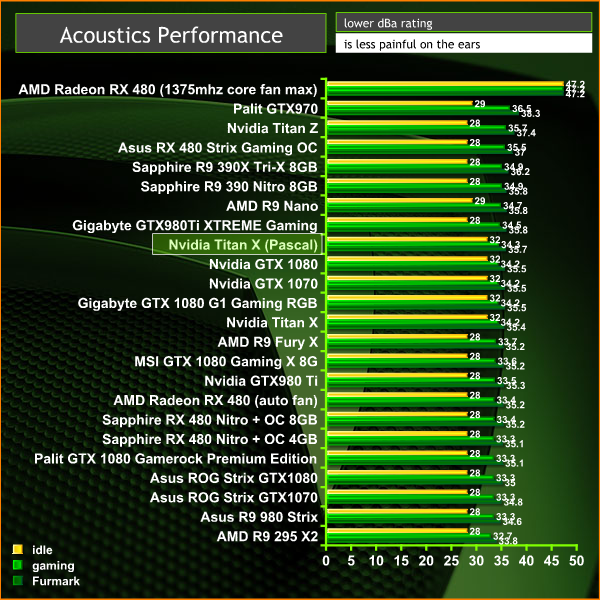
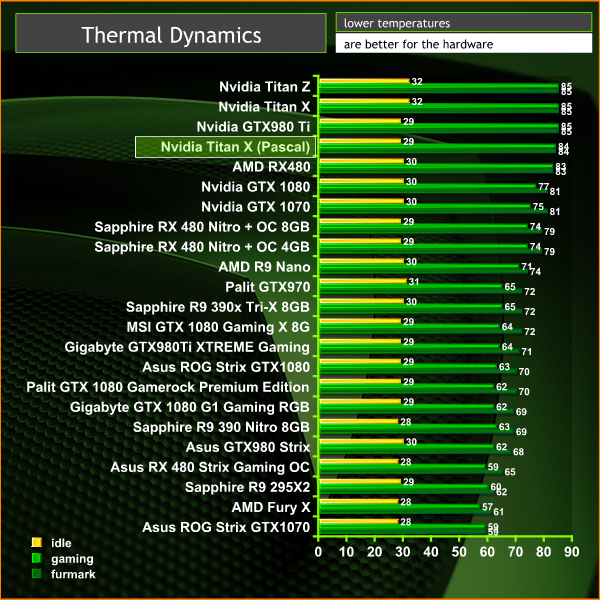
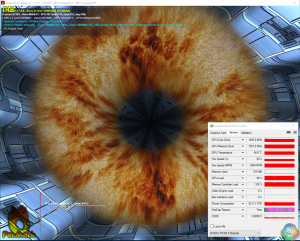
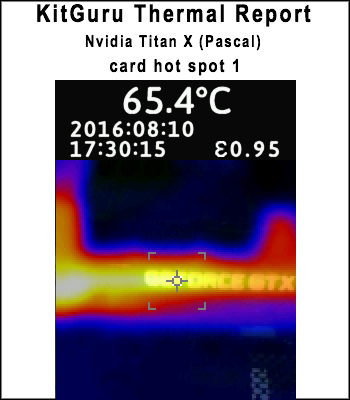
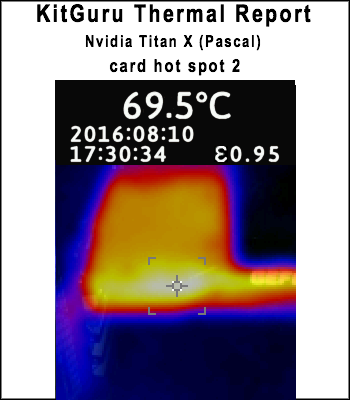


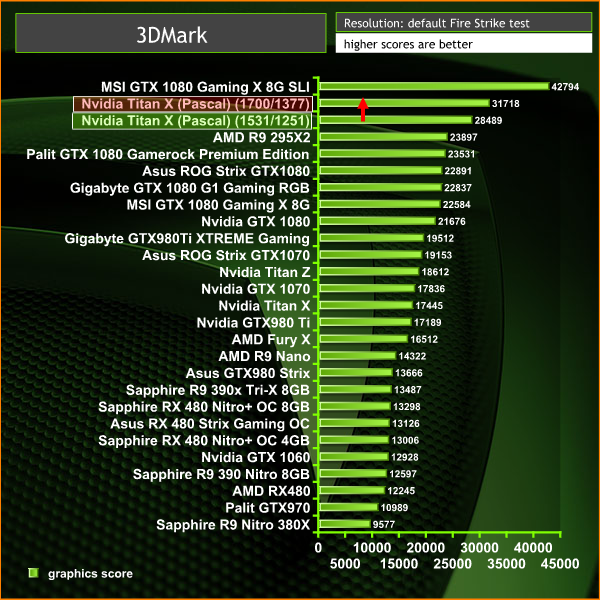
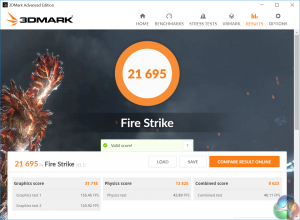
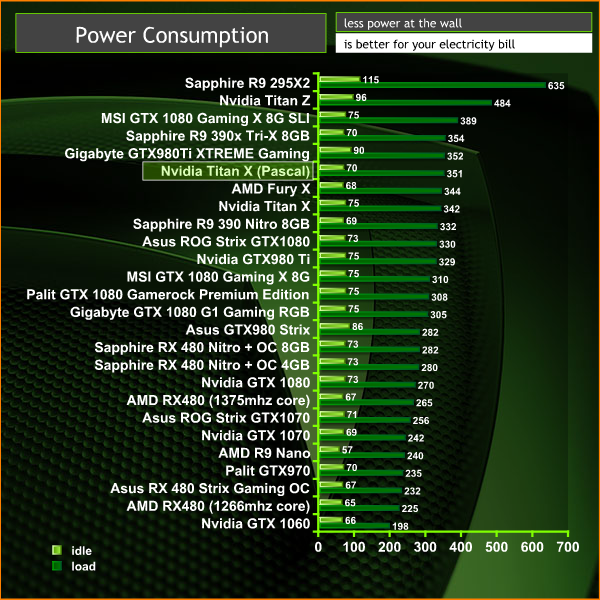
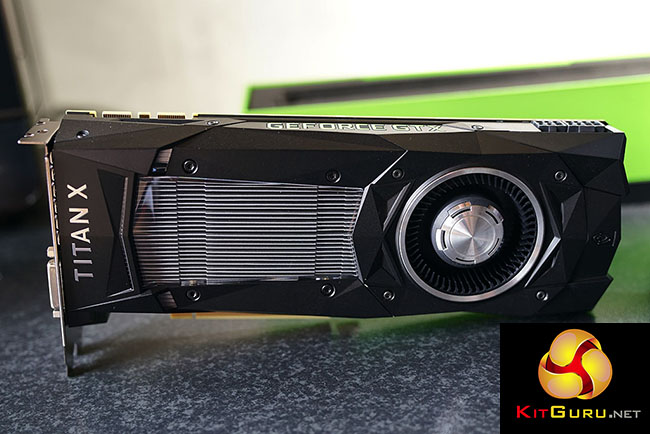


I may be inclined to getting two 1080’s before I ever get a Titan. o,O
Clocks on your overclock seem a bit conservative – I’ve managed to hold a stable +235 core / 675 memory on both cards, giving me a base clock of 1655 and boost to 1770, with a memory clock of 1420, giving me 11300 effective.
Final boost with their boost 3.0 puts me in the 2150-2180 core clock range. Can’t wait to stick waterblocks on them.
and take the wife for supper , damn! 😉
the joys of the silicon lottery I am afraid. I have recently got another Titan X, and it overclocks quite a bit higher.
Yeah it seems I’ve gotten lucky – really lucky in fact, over the last few years. These tx-p’s of mine both top out near 2200 core / 11500 mem, my previous tx-maxwell’s could boost to a shade over 1550 core, and my 5960x can sustain 5.1ghz across all cores @ 1.42v, and I can push a single core to 5.6GHz. Feels like I get danmed lucky, a lot.
Waterblocks for the tx-p’s have become a more complicated problem though – I was planning on going with EKWB for the setup, but it seems the nvidia HB sli bridge the pascal cards use won’t fit with their pascal blocks, so I’ll need another solution there.
It’s kind of crazy to think that if you notice, it took in most cases until the Pascal Titan X and in others the 1080 to beat the 295×2 in a lot of benchmarks. Kind of neat that even if you bought the 295×2 at full retail of $1500USD (in the states) in took two years, a node shrink from 28nm to 16nm, and a Video Card costing $1200 to beat it in a lot of cases.
Are they not benchmarking Doom in Vulkan?
It’s neat that a single card with only around 70% of the shader cores can be equal in performance and consume half the power.
The 295×2 was fast no doubt about it, but by no means was it particularly impressive. Hot as hell, and needed a beastly power supply to feed it. And thats without overclocking.